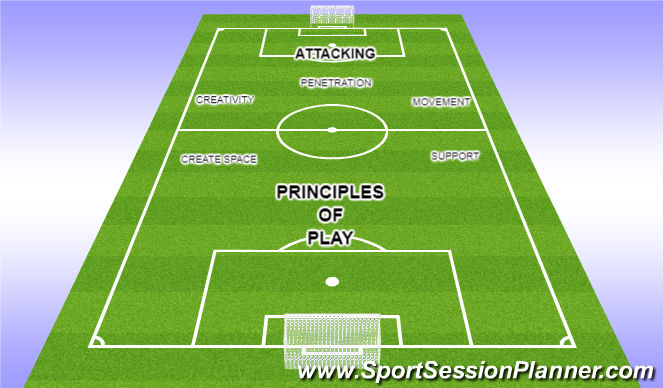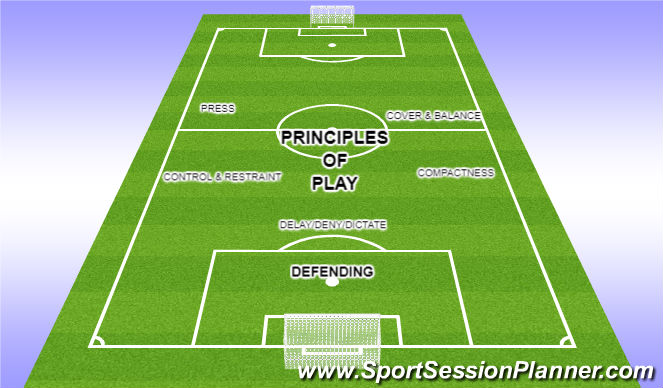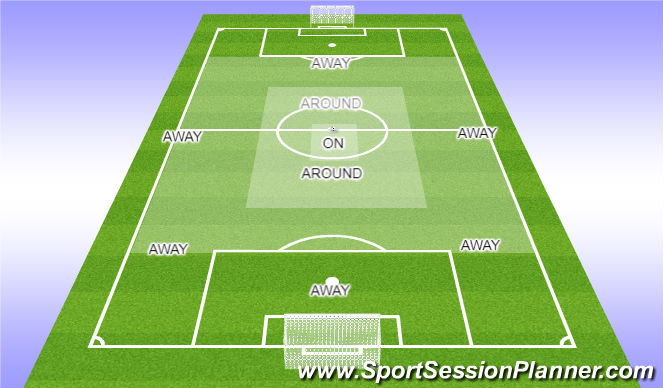Football/Soccer Session (Moderate): HOW

Profile Summary

| Name: | Matt Carter |
|---|---|
| City: | Leicester |
| Country: | United Kingdom |
| Membership: | Adult Member |
| Sport: | Football/Soccer |
Description

See the guidance at the top of this page to understand why you are not seeing interactive Football/Soccer images.

Practice types
Practice Types
Constant practice - Involves a player repeating specific movements with the aim of acquiring, refining or maintaining technique. In a constant practice a player focuses on learning the same technique under constant conditions. Elements of competition and challenge may be built into constant practices to increase a player’s motivation.
Variable practice - Involves a player practising a variety of techniques and skills under different conditions. A passing practice which incorporates passing the ball over varying distances and heights, using different speeds and techniques, is an example of a variable practice. Variable practices are less predictable than constant practices.
Random practice - Involves a player practising a variety of skills under different and changing conditions. Practice is often unpredictable with players making a variety of decisions. Random practices challenge players to transfer their technique into games, encouraging the development of tactical and game understanding.

See the guidance at the top of this page to understand why you are not seeing interactive Football/Soccer images.

Attacking Principles of Play
PRINCIPLES OF PLAY
Attacking:
Penetration is the ability to progress the ball towards the opposing team’s goal, breaking through ‘lines’ of players. This can be achieved through individual dribbling, forward passing, or shooting on goal. A team that lacks penetration will often have the ball in their defensive half, passing the ball side-to-side instead of progressing the ball forward.
Creating space is the ability to ‘spread out’ in possession and make the field big, causing the opponents to spread out too, and make it tougher for them to remain organised/compact.
Barcelona are a great example of creating space as a team. When in possession, no matter where the ball is, they have a player wide on the left, a player wide on the right, players dropped back and players pushed forward. If their wide players are too narrow, it’s easier for the opponents to remain compact, making it harder for Barcelona to penetrate. However, if the wide players stay wide, opponents will either remain narrow and sacrifice the wide space or they spread out to cover them; which causes gaps between defenders.
Likewise, if Barcelona’s forward players stay as high as possible, the defensive back line have to be aware of forward runs, and will drop back a few yards to eliminate the threat in behind. This creates space between the defensive lines of backs and midfielders for a Barcelona player to exploit. In contrast, if the forwards drop deep to receive the ball (Messi) (meaning no attacking players are high), the opposing back line can squeeze up and decrease space for the attacking team, making it harder to penetrate.
Movement is the attitude and execution of a player to make runs off-the-ball either to create space for themselves or their teammates.
The majority of off-the-ball runs in football are made selflessly, with the player knowing they are unlikely to receive the ball. For example, if your Right Midfielder has the ball and is faced by the opposing Left Back and Left Midfielder, it’s a 2v1 in favour of the defenders. Now if your Right Back makes an overlapping run, one of the defenders will track the run and create a 1v1 opportunity for your Right Midfielder. Thus, the movement of the Right Back was to the benefit of the team.
Examples of Movement:
– Overlap
– Underlap
– Crossover
– Lateral Forward Run
– Diagonal Forward Run
Support is fairly self-explanatory. Support can be ahead of the ball, to the side of the ball, or behind the ball.
In order to keep team possession, the player on the ball needs some form of support from their teammates. This could be a forward making a run into an advanced area, a central midfielder supporting to the side of the ball to switch play, or a centre back making themselves an option behind the ball to receive away from pressure.
Creativity is the players’ ability to be unpredictable. Creativity could take the form of a disguised pass, a well-executed Cruyff turn, or an improvised shot with the outside of the boot.
One of the most creative players in football history is Messi, his unpredictability makes it difficult for defenders to anticipate his next move.

See the guidance at the top of this page to understand why you are not seeing interactive Football/Soccer images.

Defending Principles of play
PRINCIPLES OF PLAY
Defending:
Press is the role of the first defender. The first defender is generally the person who is closest to the ball. Their primary role is to delay/stop the progress of the other team they don’t want the ball to get beyond them.
Delay slow down the oppostion by reducing their options on the ball, can the defender "hold them up" whilst toher players recover into shape.
Cover/Balance are the roles of the next nearest defenders in relation to the ball and position on the pitch. Generally behind the first defender, providing depth. Distance from press and the angle they are from the ball are key decisions. Balance is provided by the next nearest defenders by evaluating the position of the ball and the unmarked opponents on the pitch whilst trying to maintain the teams shape.
Compactness when a team is defending their objective is to take away the space the other team is trying to penetrate into by proper positioning. A compact team will reduce the MOST dangerous space a team can exploit. In order for a team to be compact, there must be collective movement and communication and an understanding of each players role in the team.
Control & Restraint · Being patient and waiting for the correct moment to win the ball, assess the risk before challenging for the ball.









 Play animation
Play animation Play step-by-step
Play step-by-step Repeat (toggle)
Repeat (toggle) Full Screen
Full Screen Pause
Pause Stop
Stop
How we Coach
How we coach...
a) On the ball - Coach the player who has possession.
b) Around the ball - Coach the players in the immediate vicinity of the player with the ball.
c) Away from the ball - Coach the players away from the ball. Try and affect all the players on the team in relation to roles and responsibilities off the ball.